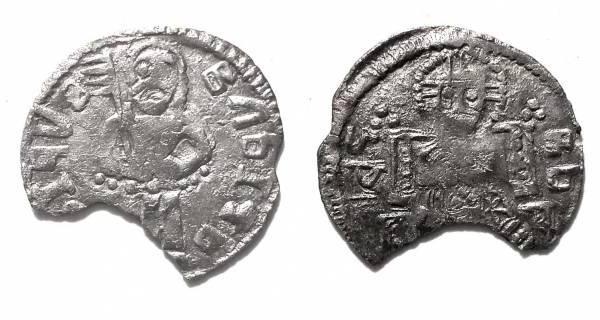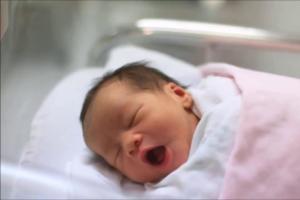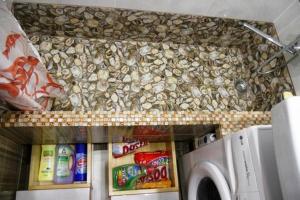Do you want to know everything about the currency of Serbia, starting with the birth of the country itself, the history of the origin of the Serbian dinar and ending with the modern ruble exchange rate? The article tells about how unions with neighboring states and world wars have affected the value, name and appearance of modern Serbian money.
The currency of Serbia. From the beginning to the present day
The history of Serbia takes its roots deep into the V century, it is confused, interesting and at the same time sad. The Serbian dinar many times became the state currency of Serbia, just as many times Serbia became the state, in one form or another.
The origin and formation of Serbia as a kingdom

At the beginning of the VI century, the Balkan Peninsula began to be settled by the Slavs, and in the VIII-IX centuries on this territory the rudiments of the Serbian states appeared.
With the end of Byzantine rule in the Balkans, by the end of the 12th century, the Serbian state turned into a fairly large power. At that time, Serbia was located almost throughout the southwestern part of the Balkans. In 1214, in the territory where present Serbia is now located, the first money appeared, which were then called dinars. The name "dinar" itself is associated with the Roman Empire. The coins of this state used to be called denarii.
At the end of the fourteenth century, Serbia came under the influence of the Ottoman Empire and was finally absorbed by it from 1459 for three and a half centuries. Since the middle of the 16th century, piastres (or kurush), which consisted of 40 pairs, have been used in Serbia.
Since the beginning of the 19th century, more than fifty years has been the struggle of Serbia for independence, and in 1868 the dinar again became the national currency. The first notes of the Serbian dinar were issued in 1876. The exchange rate was directly dependent on the French franc.
After the Austro-Hungarian war, the small principality of Serbia was granted independence. In 1882, the Kingdom of Serbia was formed with the capital in Belgrade, established parliamentary monarchy with your currency. The official currency of Serbia is the Serbian Krone.

Union with Croatia and Slovenia. Education of Yugoslavia
In 1918, the Kingdom of Serbs, Croats and Slovenes appeared. The temporary currency is the Serbian Krone. A year later, a monetary reform was carried out. In the Kingdom introduced the Yugoslav dinar. The course set for that period was 4 kroons per 1 dinar.
At the end of World War I, a new reconstruction takes place in the Balkans. The territories of Kosovo, Macedonia, Croatia and Slovenia joined Serbia. The Serbian Krone is designated as a temporary currency, but Bulgarian Lev, Austro-Hungarian Krona and Montenegro currency notes remain in circulation. Since 1929, the united territory became known as Yugoslavia. A year later, another monetary reform was carried out.
The result of World War II was the proclamation of Yugoslavia as a federal republic. Serbia was called the People’s, and later a socialist republic. New banknotes were issued that could be exchanged for Serbian dinars and Croatian kunas. The exchange was made at the rate of 1 Yugoslav dinar for 20 Serbian dinars.
By the end of 1945, the Yugoslav dinar exchange rate depended on the American dollar. For 1 US dollar they gave 50 dinars.

The collapse of Yugoslavia
Towards the end of the 20th century, inflation led the Serbian dinar to denomination. The currency of Yugoslavia was removed 4 zeros.
In the early 90s of the XX century, after numerous civil wars, Yugoslavia collapsed. From its composition came Slovenia, Macedonia, Croatia, Bosnia and Herzegovina. And after 15 years, the alliance with Montenegro broke up. As a result, Serbia again became an independent state.
The new state of the Republic of Serbia was formed, which was transformed from Yugoslavia. The currency of Serbia was again renamed, and the Serbian dinar entered into circulation. The design of the Serbian dinar was identical with the notes of the Yugoslav dinar.

Modern Serbian Dinar
Today, the currency of Serbia is the Serbian dinar, formally composed of 100 pairs. The dinar exchange rate directly depends on the euro. Banknotes of 5000, 1000, 200, 100, 50, 20 and 10 dinars are in circulation. Coins from 10 to 1 dinar and 50 pairs, made of copper-nickel-zinc alloy. The Serbian dinar to the ruble has this ratio: 100 dinars give for 67 rubles.
Currency exchange is performed by Serbian People's Bank. The course of the Serbian dinar in various exchangers in public places varies greatly. There is no commission for operations. Money exchanges outside banks or exchange offices are prosecuted under the law, for violation of which they can be sent to prison for up to 5 years.
On the territory of Serbia, you can often meet the euro, which falls here from the western borders of the Union republics. Many operations can be performed without exchanging it for Serbian dinars.
Description of notes and coins

All bills have an interesting multi-colored design with drawings and portraits. The banknotes depict iconic figures in the field of culture, politics, science and history hailing from the Balkans (Serbian linguist Vuki Karadzic, Metropolitan Peter II Petrovich Negosh, composer Stevan Stojanovic, physicist Nikola Tesla, artist Nadezhda Petrovich, geographer Jovan Zvivich, industrialist Georg Weifert, politician Slobodan Jovanwich and astronomer Milutin Milankovich). Images and inscriptions go horizontally on one side of banknotes and vertically on the other, which is an interesting feature of the Serbian dinar.
The value of the banknote is indicated in the corners of the bill. In the center are portraits, individual and group.
The design of the Serbian dinar coins has been unchanged since 2006. The obverse depicts the buildings and monasteries of Serbia (with the exception of the 20 dinar coin, Nikola Tesla is depicted on it). The state emblem and the name of the state are minted on the reverse of the coins.
All banknotes and coins are produced at the People's Yard in the capital of the Republic of Serbia.








